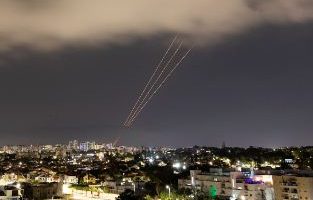Drug-traffickers pumping illegal immigrants in South Africa

By Yasir Habib Khan
“It is living hell brother. Three of my friends suffocated to death before my eyes and their bodies kept lying unattended for two days. The creepy scene haunted all in the small room, where we are hidden to prevent arrest near South Africa border. Dungeon contains no air but humidity and odor smell of decomposed bodies and sweats,” there were the last screams of my brother he made on phone, Hashim Jahan told media.
My brother Usman Zafar aged 19 kept yelling “save me. save me” and soon pangs of screeches winded down, Hashim said and added that since that day on July 1, 2016 his phone did not ring again. Hashim Jahan said that he accessed to local police in Bhawalnagar for help but all in vain.
Pakistan teems with such cases like Usman Zafar who were trafficked by human smugglers. Hundreds of people especially youth of under-developed cities with lofty dream in their eyes to earn fortunes for better future fall victim of human-trafficking mafia. Nobody knows how many people succumb to death on way to South Africa.
Senior official in Federal Investigation Agency (FIA) said that mostly mafia networks used to design rout of Mgazini and Namtumbo villages for illegal immigrants. Terming Tanzania-Mozambique border soft for entry in South Africa, they used to bribe border forces to make things happen, he added. Human-trafficking has emerged as booming business in the world as well Pakistan, he added. According to the United Nations Regional Information Centre for Western Europe (UNRIC), human trafficking is known as the third most lucrative source of organised crime revenue in the world after arms and drugs trade.
According to the United Nations Global Initiative to Fight Human Trafficking, the exploitation of all trafficked forced labour results in an estimated annual global profit of $31.6 billion. Southeast Asia and South Asia house the greatest number of internationally trafficked people — an estimated 2.5 million and 1.5 million, respectively.
Mostly, trafficking victims become prey of domestic service, bonded labour, sex business and begging mafias and militancy in conflict-ridden areas. Sloppy law enforcement, department concerned complicity and poor financial condition of people have put
US State Department’s trafficking in Persons report 2017 said Pakistan government demonstrated mixed law enforcement efforts against trafficking. Law enforcement efforts against sex trafficking increased and the provinces of Sindh, Balochistan, and the Islamabad Capital Territory reported data for the first time.
“However, law enforcement efforts against labor trafficking remained inadequate compared to the scale of the problem.
Report said that section 369A prescribes penalties ranging from five to seven years imprisonment, or a fine between 500,000 and 700,000 Pakistani rupees (PKR) ($4,790 and $6,710), or both. These penalties are sufficiently stringent but not commensurate with those prescribed for other serious crimes, such as rape. Several other sections of the PPC criminalize some forms of human trafficking, such as slavery and selling or buying a person for the purposes of prostitution; maximum penalties for these offenses range from seven years to life imprisonment. These prescribed penalties are sufficiently stringent and the laws criminalizing sex trafficking have penalties commensurate with those prescribed for other serious crimes, such as rape. Transnational sex and labor trafficking offenses, as well as some non-trafficking crimes—such as human smuggling and fraudulent adoption—are criminalized in the Prevention and Control of Human Trafficking Ordinance (PACHTO), which prescribes penalties of seven to 14 years imprisonment,” it said.
“Despite efforts to formalize differentiation in policies, some law enforcement officials continued to conflate human trafficking and migrant smuggling and may have reported statistics conflating the two crimes, as PACHTO criminalizes both trafficking and smuggling.
The government also reported data on trafficking investigations, prosecutions, and convictions under the penal code by province and, for the first time, Sindh, Balochistan, and the Islamabad Capital Territory (ICT) reported data. Overall, the government reported an increase in sex trafficking investigations, prosecutions, and convictions.
Punjab reported the investigation of 1,241 sex trafficking cases in 2016, compared with 1,291 cases in 2015. Punjab initiated prosecutions of 1,779 alleged sex traffickers in 2016 and reported 119 convictions, compared with 40 convictions in 2015. Khyber Pakhtunkhwa reported the investigation of 55 sex trafficking cases in 2016, an increase compared with 27 cases in 2015, and the prosecution of 263 alleged sex traffickers in 2016. Khyber Pakhtunkhwa did not convict any traffickers in 2016—the same result as in 2015,” report said
US report said that Sindh, notably providing data for the first time, reported the investigation of 35 sex trafficking cases, prosecution of 164 alleged sex traffickers, and zero convictions in 2016. Balochistan, also notably providing data for the first time, reported the investigation of six sex trafficking cases, prosecution of 16 alleged sex traffickers, and zero convictions in 2016. The ICT, also providing data for the first time, reported the investigation of 22 sex trafficking cases, prosecution of 108 alleged traffickers, and zero convictions in 2016. Both the semi-autonomous territories of Azad Jammu and Kashmir and Gilgit-Baltistan reported an increase from zero sex trafficking investigations, prosecutions, and convictions in 2015. Azad Jammu and Kashmir reported investigation of 12 sex trafficking cases, prosecution of 19 alleged traffickers, and zero convictions. Gilgit-Baltistan reported investigation of three sex trafficking cases, prosecution of four alleged sex traffickers, and conviction of one trafficker in 2016.”
The government increased efforts to prevent trafficking. In December 2016, the government amended its national strategic framework against trafficking in persons and human smuggling to extend through 2020 and assign timelines to the activities. In November 2016, the government ratified the UN Convention on the Rights of the Child Optional Protocol on Armed Conflict, which among other provisions, requires the government to take all feasible measures to prevent recruitment and use of children by non-state armed groups. In July 2016, the Punjab, and in March 2017, the Sindh governments, passed legislation restricting the employment of children; both laws specifically prohibit the forced or compulsory recruitment of children for use in armed conflict as a form of slavery.
Report recommended increase prosecutions and convictions, particularly of forced and bonded labor. While strictly respecting due process, it asked for anti-trafficking law that prohibits and penalizes all forms of human trafficking, including sex trafficking of those under 18 without requiring coercive means, and prescribes sufficiently stringent penalties.
The Bureau of Emigration and Overseas Employment (BEOE) monitored overseas migration by issuing licenses to private employment promoters and monitoring workers who migrate through their own arrangements. The Emigration Ordinance of 1979 prohibited the role of unregulated and unregistered sub-agents; however, sub-agents continued to operate widely with impunity. The government allowed licensed employment promoters to charge migrant workers a service fee and workers to pay all the costs associated with overseas employment. While the government stipulated a receipt should be issued to the migrant worker for these costs, the government did not specify any cost limit and the BEOE did not consistently review migrant workers’ receipts—in 2016, an international organization’s research revealed more than 80 percent of Pakistani workers’ cost for employment in Saudi Arabia and United Arab Emirates was the result of exorbitant visa fees. BEOE required migrant workers to attend a pre-departure briefing at one of its seven offices including on what to do if they encounter problems; however, observers asserted the government did not take sufficient steps to inform emigrants about trafficking even though a number of migrant workers become trafficking victims.
Pakistani men and women migrate voluntarily to the Gulf states and Europe for low-skilled employment—such as domestic service, driving, and construction work; some become victims of labor trafficking. False job offers and high recruitment fees charged by illegal labor agents or sub-agents of licensed Pakistani overseas employment promoters entrap Pakistanis into sex trafficking and bonded labor. Some Pakistani children and adults with disabilities are forced to beg in Iran. Women and girls from Afghanistan, China, Russia, Nepal, Iran, Bangladesh, Refugees from Afghanistan, Bangladesh, and Burma are particularly vulnerable to trafficking in Pakistan.
Related News

ICE, ASITA sign MoU of cooperation, expect direct flights to Pakistan
JAKARTA, OCT 6 /DNA/ – The International Creatives Exchange (ICE) has signed a memorandum ofRead More

BREAKING: Iran launches massive missile attack on Israel
TEHRAN, OCT 1: Iran launched massive missile attack on Israel. IDF claims missiles launched fromRead More


Comments are Closed